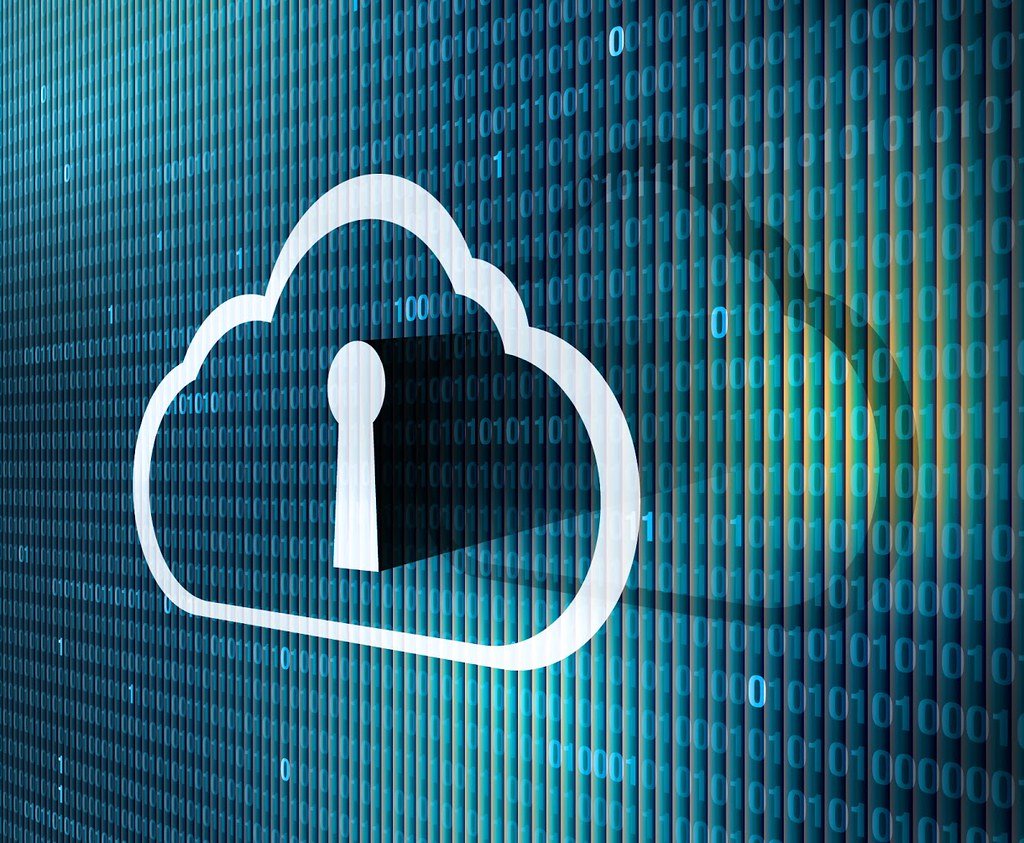Protecting All Aspects of Your Data in the Cloud, Data security is a top priority for businesses of all sizes. The recent Equifax data breach, in which 143 million Americans’ personal data was stolen, is a stark reminder of the importance of data security. Although most businesses are equipped to handle a data breach, it’s always important to take steps to protect all aspects of your data in the cloud. In this blog post, we will explore five ways you can protect your data in the cloud and keep your business safe from hackers.
Why Data Security in the Cloud is Critical
Cloud security is a critical task for any business that depends on cloud-based solutions. The cloud offers businesses the ability to increase efficiency, agility and accessibility by automating processes and providing quick turnaround times. However, these benefits come at a cost – data security in the cloud is paramount to protect your business data from unauthorized access.
The cloud offers businesses unlimited storage capacity and the ability to quickly deploy applications without having to worry about infrastructure or software updates. Because of this, data in the cloud can be more vulnerable than data stored on-premises. Hackers can easily accessed your company’s confidential information if they gain access to your cloud server.
To protect your data in the cloud, you need to take several steps:
1. Configure strong passwords and authentication schemes: Make sure all users are using strong passwords and authentication schemes, such as Two-factor Authentication (2FA). 2. Harden your servers: Lock down your servers with security features such as firewalls and intrusion detection systems (IDS/IPS). 3. Train employees: Ensure employees are aware of the importance of data security and have been trained on best practices for safeguarding information in the cloud. 4. Implement periodic incident investigations: Conduct periodic incident investigations to identify any suspicious activity or attempts at hacking your data in the Cloud. 5. Secureconnections: Use secure connections when transferring data between your corporate network and the cloud services you use. 6. Keep up with industry standards: Keep up with industry standards for data security, such as the Payment Card Industry Data Security Standard (PCI DSS).
By following these tips, you can protect your business data in the cloud and maintain a secure environment.
The Different Types of Cloud Data
Cloud data offers many advantages, but there are also risks associated with using it. There are three main ways to protect your data in the cloud: encrypting it at rest, using a VPN when accessing the cloud, and maintaining a secure web server.
Encrypting Your Data at Rest
One way to protect your data in the cloud is to encrypt it before you store it on a remote server. This will make it difficult for someone else to access the information without your permission. You can use different encryption methods, such as AES-256 or TLS 1.2, which are both considered strong passwords. You can also use a password manager to remember all of your passwords and encrypt them automatically.
When Accessing the Cloud
Another way to protect your data in the cloud is to use a VPN when accessing the internet. A VPN creates an encrypted tunnel between your computer and the VPN server, which makes it difficult for anyone else to intercept or spy on your traffic. In addition, using a VPN will prevent anyone from tracking your location while you’re online. To find a good VPN service, look for one that has robust security features and user reviews.
Maintaining a Secure Web Server
Another way to protect your data in the cloud is to maintain a secure web server. This will make it difficult for anyone else to access your information without your permission. You can use different security measures, such as password protection, firewall rules, and antivirus software. You can also encrypt your data before you store it on the server.
Best Practices for Securing Your Cloud Data
Cloud computing has revolutionized how we work and think about technology. But like anything new, it comes with its own set of risks.
One of the most important ways to protect your data in the cloud is to take a holistic view of security. This means protecting your data at all stages – from storage to processing to delivery – so that you minimize the chances of someone accessing or stealing it. Here are some best practices for securing your cloud data:
1. Establish an effective security plan from the outset.
Make sure you have a clear understanding of your business goals and objectives for using cloud services, as this will help you identify which areas of your data require additional protection. Then, develop a strategy based on those needs and create an action plan to implement it.
2. Always use encryption when transmitting sensitive data in the cloud.
Encryption protects your data by transforming it into a readable format while still safeguarding its integrity. This is especially important when transferring sensitive information over public networks, such as the internet, since hackers can easily access unencrypted data streams in the cloud.
3. Store only what you need in the cloud and delete unnecessary files when they’re no longer needed.
This guideline applies not only to personal files stored in the cloud but also to corporate content stored there as well – particularly if it’s no longer being used or is only being used for archival purposes. It’s also important to be mindful of how much data you’re actually storing in the cloud, as excessive data storage can lead to increased cyber risk.
4. Regularly back up your data in the cloud.
Make sure you have a robust backup plan in place to ensure that your data is always protected in the event of a fire, flood, or other natural or man-made disasters. Backing up data to external media or an off-site storage facility also ensures that it’s available if your primary data storage location is compromised.
5. Use strong passwords and keep them updated.
A strong password is not only difficult for others to guess but also helps protect your data against unauthorized access if it falls into the wrong hands. Make sure you regularly change your passwords, and don’t use easily guessed words or easily accessible personal information such as birthdates or social security numbers.
Encrypting Your Cloud Data
When storing your data in the cloud, you have several options for encryption. Whether you’re using a public or private cloud provider, you should encrypt all of your data to protect it from unauthorized access.
Public Clouds: Public clouds like Amazon Web Services (AWS) and Microsoft Azure offer encrypted storage options that allow you to securely store your data with the assurance that it will be backed up in case of a disaster. The AWS S3 service offers users the ability to encrypt any file with AES-256 encryption. Azure provides similar capabilities with its Storage Service Encryption feature.
Private Clouds: If you have your own private cloud, then you can encrypt your data at rest using industry-standard encryption technologies such as Windows Server 2012 R2’s Encrypting File System (EFS). You can also encrypt traffic between machines on your private cloud and the public internet by using IPSec or Secure Sockets Layer (SSL) VPNs.
Cloud Storage Providers: If you choose not to encrypt your data, then make sure that the cloud storage provider you select offers robust security features such as two-factor authentication and backup mechanisms. Additionally, make sure that the provider has a good reputation for protecting customer data.
Managing Access and Identity in the Cloud
Managing access and identity in the cloud is essential for protecting your data. You need to be sure that only authorized users have access to your information, and that their identities are verified.
To manage access and identity in the cloud, you need to use multiple authentication methods. You can use password authentication, which is the simplest way to protect your data. You can also use two-factor authentication, which requires users to enter both a password and a code sent by text message or an app. You can also use digital signatures, which provide an additional layer of security by verifying the identity of the sender.
Monitoring and Detecting Threats to Your Cloud Data
Cloud-based data is vulnerable to threats from both inside and outside the organization. You need to monitor your data and detect and respond to threats quickly in order to protect your cloud data.
Monitoring Tools
To effectively monitor your data, you need to have a good monitoring solution in place. There are a variety of different tools you can use to detect threats, including network security monitoring tools, application performance monitoring tools, and storage system monitoring tools.
Network Security Monitoring Tools
Network security monitoring tools help you identify attacks that are targeting your network infrastructure and devices. These tools can also help you find suspicious activity, diagnose and fix issues, and improve overall security posture.
Application Performance Monitoring Tools
Application performance monitoring tools can help you diagnose problems with applications, track user behavior, and measure the impact of changes on system performance. These tools can also help you identify potential issues before they escalate into more serious problems.
Disaster Recovery and Business Continuity in the Cloud
Cloud-based data storage and processing can offer many benefits, but it also presents new risks. A cloud-based disaster recovery plan should account for the potential for data loss, as well as incidents that could disrupt business continuity in the cloud.
Data protection services can help mitigate these risks. Cloud-based backup and disaster recovery solutions can help protect your data from loss or corruption, while continuity planning and Business Continuity Management (BCM) tools can ensure that your business operations continue in the event of an incident.
Locating your data in the cloud also presents new security challenges. You need to protect your data from unauthorized access, deletion, or modification. To do this, you need to take account of all aspects of your data – from its location to who has access to it.
To ensure a successful cloud-based disaster recovery plan, you need to evaluate your needs and consider how best to deploy the right technology in the right mix for your organization. Contact us today to get started!
Compliance and Regulations in Cloud Data Security
Cloud technology is growing in popularity for a variety of reasons, but it also presents new compliance and regulatory challenges. Data in the cloud is often held by third-party providers, who may not have the same stringent security requirements as your own organization. In addition, the clouds are increasingly being used to store sensitive data, such as customer records and financial information.
To protect your data in the cloud, you need to take several steps. First, look at your overall data protection strategy and make sure that you are implementing best practices across all aspects of data handling. Second, verify that the third-party providers you use have appropriate security measures in place. Third, ensure that your employees are aware of the risks associated with accessing cloud data and are trained on how to protect themselves. Finally, periodically review your data protection policies and procedures to ensure that they are still up to date and reflect current threats and best practices.
The Future of Cloud Data Security
The cloud has ushered in a new era of data security. With the ability to store and access data from anywhere, organizations can protect their data in a way that was never possible before. However, there are still certain precautions you should take to ensure your data is secure in the cloud.
One of the most important things you can do is create a Cloud Security Plan. This plan will outline all of the steps you will take to protect your data in the cloud, from identification and authentication procedures through to data encryption and storage mechanisms. It is also important to have an incident response plan in place, as any breach or theft of your data will cause extensive damage.
To make sure your data is always safe and secure, it is essential that you use strong passwords and keep them updated. Also remember to never divulge sensitive information such as login credentials or encryption keys online. Finally, be sure to regularly back up your data so you can restore it if necessary.
Conclusion
In today’s world, the cloud is omnipresent. Whether you’re a small business or an enterprise, chances are you rely on cloud-based services to help you get your job done. But with so much data moving through the cloud, it’s important that you protect all aspects of your data—from its storage to its transmission. In this article, we outline five tips for protecting your data in the cloud and helping you stay safe while using cloud-based services. Thanks for reading!






